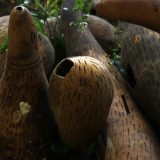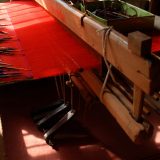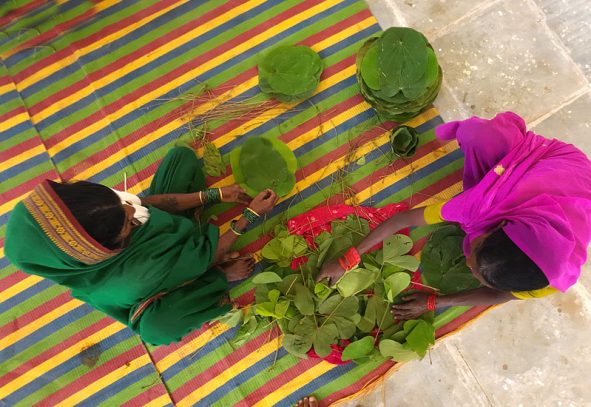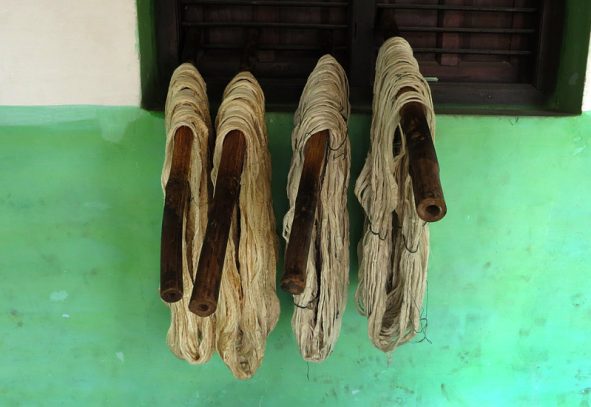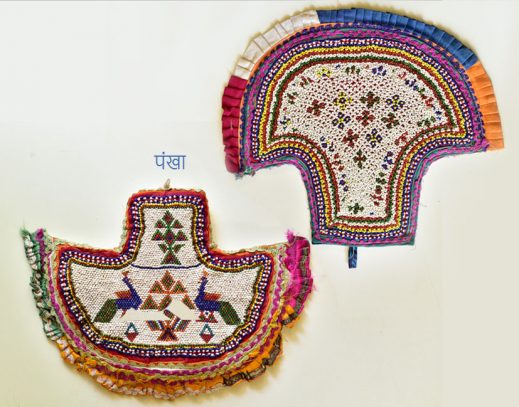From Cocoon to Carpets…

As the sun rises, the valley spreads like an enormous exquisitely patterned carpet… unrolling gently along the hillside like a million dewdrops… glittering at the edge of the rippling streams cascading from a natural spring… Chatoyant! are the colors of its days, its seasons, of its people and of the silk with which they weave their inner gardens to manifestation…. and how can anyone then put their finger on one…. and own one… The owners of such gardens must take custody of not a carpet, not a pattern, not a few definitive colors… but a frame within which anything is possible…. and everything is transitory….

And so every carpet is indeed magical in itself…
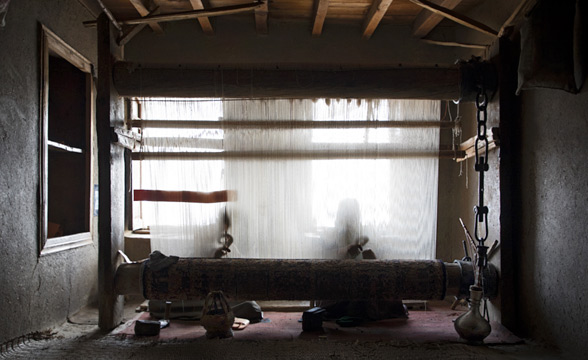
Behind the translucent veil knotting fine silk strands into even finer knots, an array of Asami (weavers) sit with their knees up facing the Waan (Loom)correctly in their positions in the warmingly homelike design of the workshop. They weave…. Gardens….! as their Wasta leads them with his singing… Mumbling to infinity, he speaks to no one in particular and yet he sings for everyone…. his Talim…. at times from a piece of paper and at times from the scroll of his memory…. only to be interrupted by the unexpected fusillade of stories fitting themselves in-between… and it’s time for everyone to break for a little clambake…. some bread, some Nun Chai…. some Tamokh Jajeer...
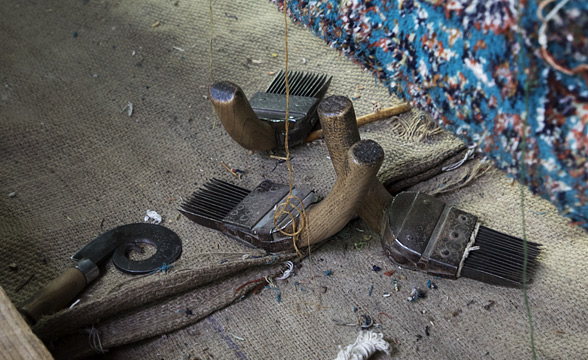
“Like many a splendor trees that dot the landscape, a mulberry tree manifests as the tree-of-life convivially sharing with the little wiggly larva its leaves… so it can weave itself a fine cocoon, to grow itself a pair of wings, soft yet strong enough to carry it to many flowers… but does it know that the cocoon it made will be transformed into something as beautiful as itself…into a new life… The transformation of silk worm into a moth or its cocoon into one of the finest carpets is a remarkable journey…. and we all are watching it everyday… ”
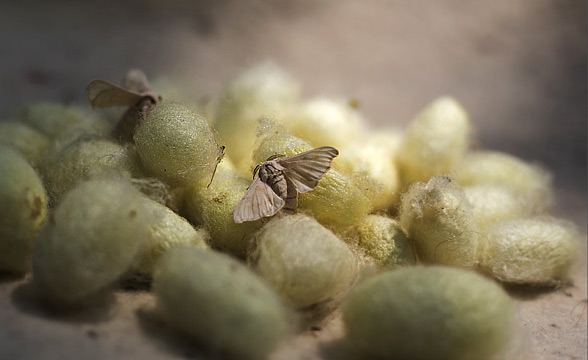
“As it is known, the technique of pile carpets came to India from Persia around a thousand years back, but it was us who made it more exquisite. Of all the crafts representative of Indian craftsmen taking unfamiliar skills and honing them to perfection, this stands as a pioneer….”
“It is a trade that Kashmir is know world over for, other than that of Pashmina shawls …”
“Karkhanas for various crafts were established by Zain-ul-Abadin in Kashmir; to make it an industry to generate employment and trade. These established streamlined processes and enhanced skills. Each would employ hundreds of Tsats (artisans) and Shagirds (apprentices) lead by a master. ”
“Kalbaff…. you and me!…. And this… Kal-baffi!…. from Persia….”
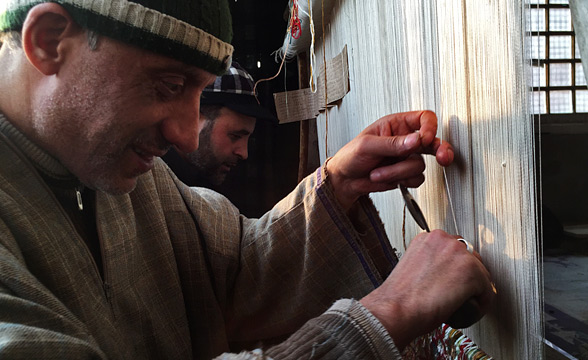
Nodding their heads in agreement to their common origin they made their way back to their original positions…
The layout is the imagery of a Persian garden… changing through pre-Islamic times to the geometric Mughal gardens in India between 16th and 18th centuries…. they come together….. The gardens….. on paper and on ground leading to Muntan, the central garden, enclosed within a handsome stepped garden wall, the Aund… The garden within could further be divided into quarters along its axis, the Adwar…. or could just be left as a single court….
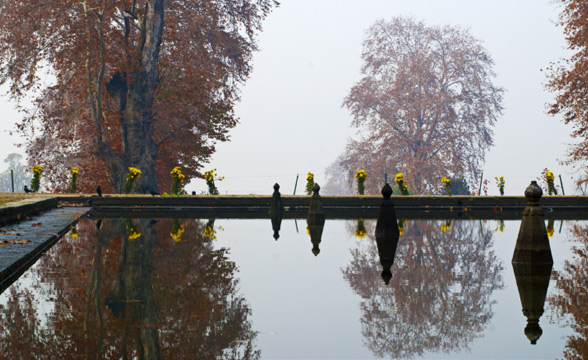
An elaborate Aund may incorporate as many as seven layers and is then called Satlat. A single colored strip running along the periphery frames the entire layout. As soon as we break into it, we find ourselves on the first step…. too narrow… it challenges to balance on a single foot and yet invites us with its simple motifs and complimentary colors… we name it Jeerā…. and step further… The second step is a surprise… colors stand out and may even speak in disagreement…. and are accommodated but within a little wider strip called Kengri. As we proceed to the third step in reflection… Jeerā… we learn how contrast looks beautiful within harmony…. The fourth and the widest step is called Hashi. We are already half way through to our garden of dreams… and here we see our efforts blooming… a leisurely park where contrast and harmony make merry together… more than ever before but less than what is to follow… it is a rest in journey, an inkling in time… this is after which we get up and march the jeerā-kengri-jeerā again….
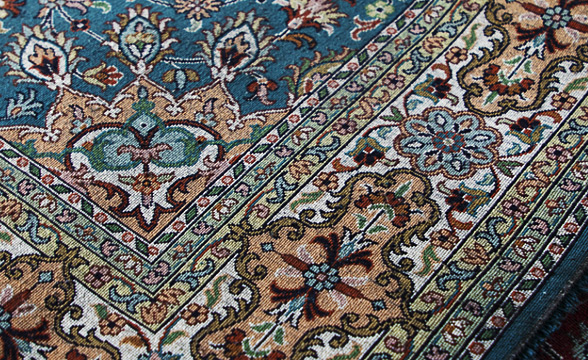
We arrive at the much revered and awaited garden…. as it reveals what lies in the heart of the lover … could it be an ethereal Tree of life…. or a baroque Mehrab… or a Vase full of flowers… or the Floral Medallion….
Here in this carpet lives an ever lovely spring
Unscorched by summer’s ardent flame,
Safe too from autumn’s boisterous gales,
Is gaily blooming still,
The handsome wide border is the garden wall
Protecting, preserving the park within
For refuge and renewal: a magic space
For concourse, music and rejoicing,
For contemplation’s lonely spell –
Conversations grave or lover’s shy disclosure…
From all these perils here at last set free,
In the garden all find security…
The beloved’s face at last we see,
And there attain our journey’s end,
Our life’s reward and final Destiny –
Refuge and fulfillment in His Infinity.
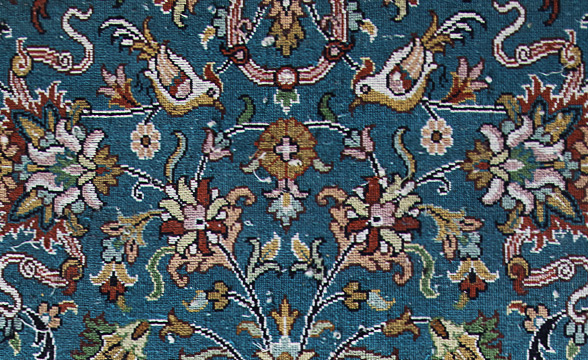
” Akbar was a liberal king…. his love of the place and its people is the reason why we could incorporate new forms and arrangements of ornamentation… ”
“Like these vibrant flowers and birds… the carpet is a true representation of the vale of Kashmir… the paradise itself…”
“Right from processing raw silk to final trimming and washing of a carpet is like tending to a garden…. Isn’t it?…. A garden that finally adorns a home and bring the garden inside of a proud owner out….”
Naaqashi draws out the design on a square grid of graph paper where each square is divided into 25 sub units, each representing one knot and corresponding colors marked on the design. Then a Wasta or Talim Guru prepares the Talim from the graph paper into rolls of written codes, which translate into a sequence of colored symbols for each knot. These strips of coded colors are called Talim. There are as many as 200 to 800 strips or more depending on the size, motifs and colors used in one particular design.
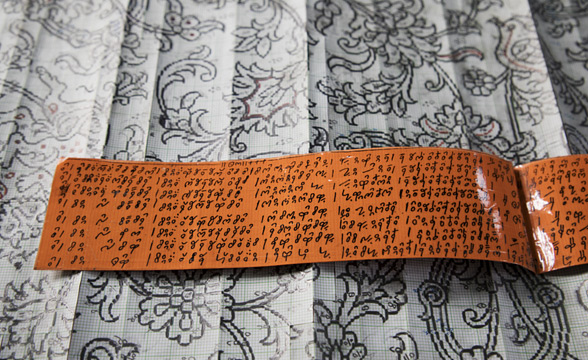
Translating a design into a Talim calls for care and experience as it takes 6-12 months for many weavers to complete a single carpet and a simple flaw in the Talim would make the carpet of no value. This makes the art of writing Talim a specialized practice and forms the foundation of the carpet industry. It is interesting to know that this practice was derived from traditional Talims used for making Kani shawls… when the shawl weavers turned to carpet weaving, they continued the practice …
The finest carpets of Kashmir are made of silk warp and pile; this allows higher count of knots per inch, that brings in a higher resolution of the pattern and demands for deft weavers who can achieve this. For patterns with low resolution the warp is made of cotton and the pile is knotted with silk or wool.
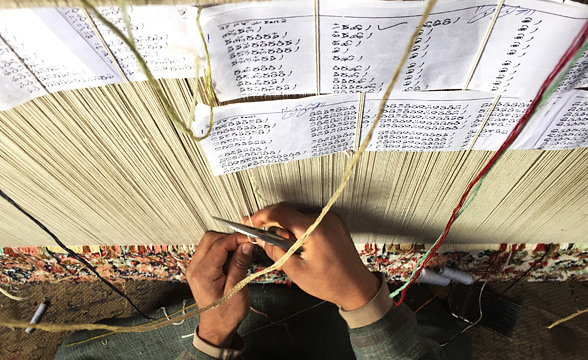
The pile of a carpet is brought to life with interplay of infinite reflections as the light metamorphoses through the day… Kashmiri carpets are know for their wealth of colors and shades…. and the scenic splendor of the land is a perennial source of inspiration…the colors are subtle and the motifs are defined….
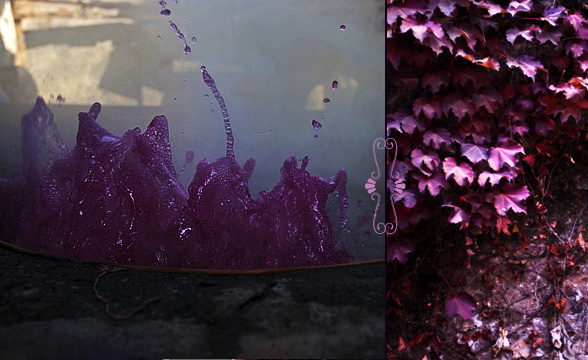
Colors used to dye the silk and wool yarn have traditionally been extracted from these natural splendors, like saffron crocus for pure yellow, the madder root for red and pinks, turmeric for shades of red, the rhubarb plant for dark red and copper red, green from the grass – kusa and kikar leaves for brown and many more…
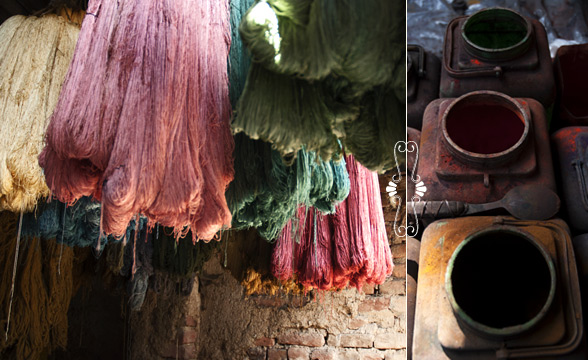
Tools used in making a carpet are minimal. The loom is composed of two horizontal beams, between which the warp threads are stretched, one beam in front of the weaver and the second behind the first. The tools used include a beautiful spiral blade called Khur, used to make a cut once the thread is knotted, a wood or a metal comb called Panja, to push the knots together, a pair of scissors to cut the carpet to an even form once it is finished.
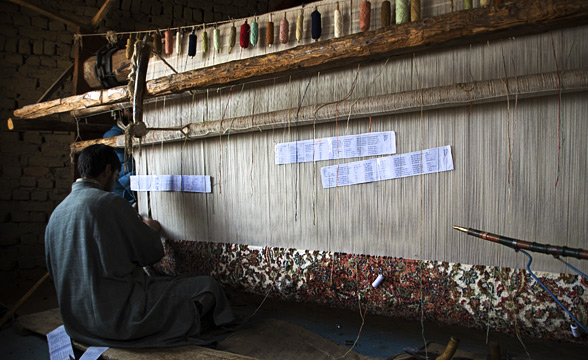
Responding in singing…. to indicate the execution of the command…. the weavers after every few inches of knotting beat down the knots & the weft together with a Punja. The carpet keeps rolling over the lower beam of the loom and the Talim keeps rising up along the warp, where it is held to be read for the next few lines…the singing continues into the dusk… till Sun guides them to their nests for the rest of the day…
……………………………………………………………………………………………………………………………..
‘Ode to Garden Carpet’
Poem by – Unknown sufi poet (c. AD 1500)
Read more about craft ~ Gaatha.org

